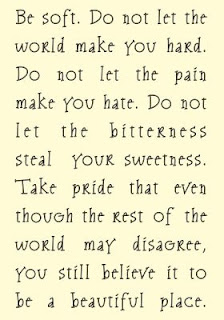written by Michelle Moghtader, Reuters in Dubai
Tuesday July 8, 2014
Iranian journalist and blogger Marzieh Rasouli reported to Evin prison on Tuesday to serve a two-year sentence and receive 50 lashes over charges of spreading anti-government propaganda, sources close to the journalist said.
On Monday she wrote on her Twitter account that she was convicted of publishing “propaganda against the establishment and disruption of public order through participation in gatherings,” in a case that dates back to January 2012.
Shortly after she was arrested that year, the Islamic Republic’s state television accused her of having ties with foreigners, according to a Facebook page dedicated to her case.
Rasouli had previously worked for reformist daily newspapers, including Shargh and Etemad, where she covered arts, music and wrote book reviews.
The case has angered some Iranian journalists, who had hoped that the election of a moderate president, Hassan Rowhani, last year would bring greater political and cultural freedoms at home, a development that has yet to materialise.
Rowhani has been preoccupied with trying to shore up the Iranian economy, in part by pursuing a nuclear deal with the West to lift crushing financial sanctions, as well as civil wars raging in Tehran’s regional allies Syria and Iraq.
**********************
[source: The Iran Primer]
The 1979 revolution erased six decades of modernization of Iran’s judicial system. The theocrats moved swiftly to overhaul the legal system to incorporate Islamic Sharia law. Criminal and civil codes were modified; family laws that cover marriage, divorce, child custody and many women’s rights faced the biggest changes. The new Islamic penal code included controversial articles, such as the Qisas law of retribution for murder, stoning for adultery, amputations of body parts for theft and certain national security offenses, and flogging for a wide range of offenses.
Many of the new laws were legislated in vague terms, allowing for subjective interpretations as well as diverse and even contradictory rulings by judges. As a result, the judiciary is widely considered one of the Islamic Republic’s most dysfunctional institutions. Even judges are critical. When Ayatollah Mahmoud Hashemi Shahroudi was appointed judicial chief in 1999, he said in his inaugural speech that he inherited an institution “in ruins” and in serious need of reforms.
Of the three branches of government, the clerics have the strongest presence in the judiciary. Only clerics who trained in Islamic jurisprudence or have degrees from religious law schools can now become judges. Women are barred from becoming judges altogether. The head of the judiciary, the country’s prosecutor general, and all Supreme Court judges have to be mojtahids, or high-ranking clerics.
The legal code
Iranian laws reflect a specific interpretation of Shiite jurisprudence, which is not embraced all by Shiites. It has particularly changed family laws, instituted broad discriminatory laws against women, introduced the laws of retribution and toughened the penal code with punishments such as stoning, floggings and amputations.
Among the most controversial laws are those relating to the age at which offenders are held responsible as adults for criminal activity. The Islamic penal code defines this age of responsibility as nine for girls and 15 for boys. This has resulted in large numbers of juvenile executions.
Reformist religious scholars have challenged these interpretations of Sharia law.They claim Islamic jurisprudence does not allow for the implementation of executions in the absence of a divine individual, such as the Prophet Mohammed or his descendents. Reform of the civil and penal codes is a major flashpoint between reformist and conservative factions within Iran’s political system.
Executions
During the 1980s, Revolutionary Courts routinely sentenced political prisoners to death. In 1988, at least 4,000 political prisoners who had already been prosecuted and sentenced to prison terms were summarily retried and executed within a two-month period, according to Amnesty International and Human Rights Watch.
Iran still carries out more executions proportionate to its population than any other country. Only China executed more people in sheer numbers than Iran. In 2005, the year President Mahmoud Ahmadinejad assumed office, Iran executed 86 individuals. In 2009, Iran executed 388 people.
A large number of executions are for drug-related offences. Despite tough penalties, drug use and smuggling remain serious problems.
Iran leads the world in executing juvenile offenders. In 2008 and 2009, it was the only country to carry out executions of minors, in violation of its obligations under the Convention on the Rights of the Child.
In the 2009 show-trials after the election turmoil, eleven dissidents were sentenced to death for participating in street demonstrations. Between November 2009 and May 2010, Iran executed nine political prisoners.
Crimes punishable by death under Iranian law include armed resistance against the state (defined as enmity against God), murder, drug trafficking, rape, adultery and homosexuality.
Although, in Islam under sharia law the rape victim needs to have 4 male witnesses to prove her rape and reporting a rape is discouraged by Islam because it would "dishonor the family". If the female reports the rape, she is murdered by her male family members. And in some nations that follow Islamic sharia law, the rapist is allowed freedom if he marries his rape victim. So basically, for Iran or other Islamic nations to claim "rape" is punishable by death is blatantly untrue. The one that dies is the female rape victim.






































No comments:
Post a Comment